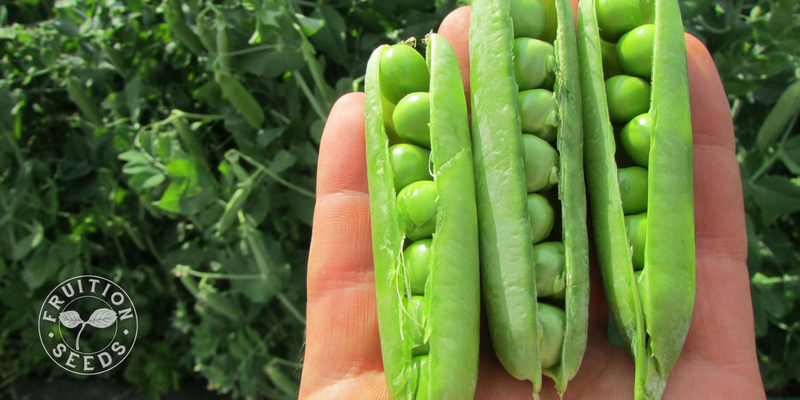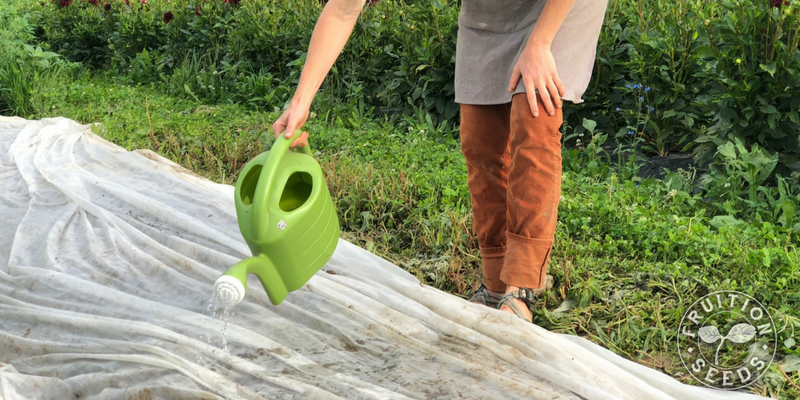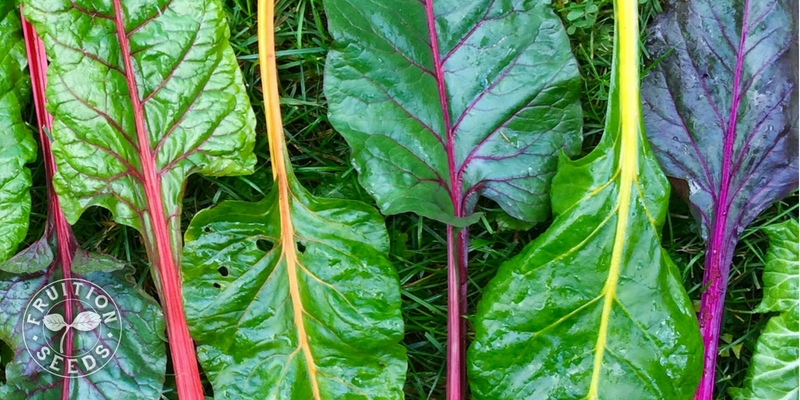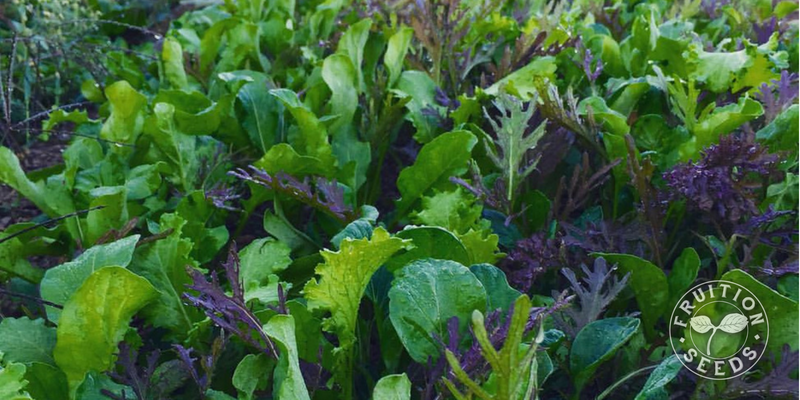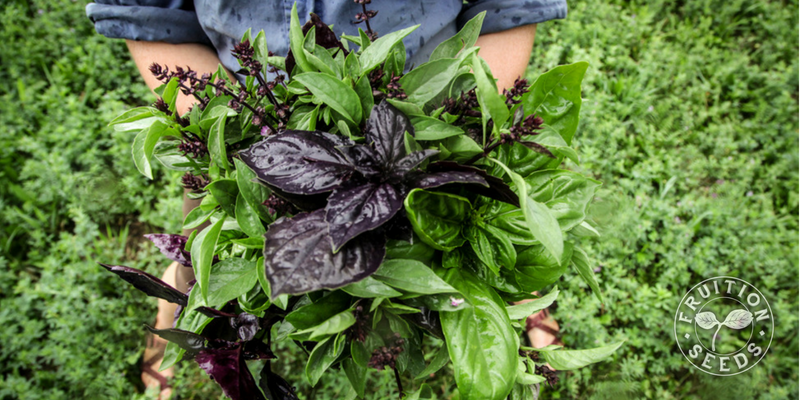As I look around the farm this final week of July, I see red tomatoes on the vine, seven-foot pole beans reaching for the sky and thousands of dahlias in full bloom. Abundance and beauty abound!
Amid the extraordinary bounty of summer, I’m sowing the abundance of autumn. This week, we’re prepping beds and sowing carrots, beets, watermelon radish, more cilantro, the start of cool-season lettuces and (my favorite) compact peas. These are the seeds that will feed us in the cool months to come.
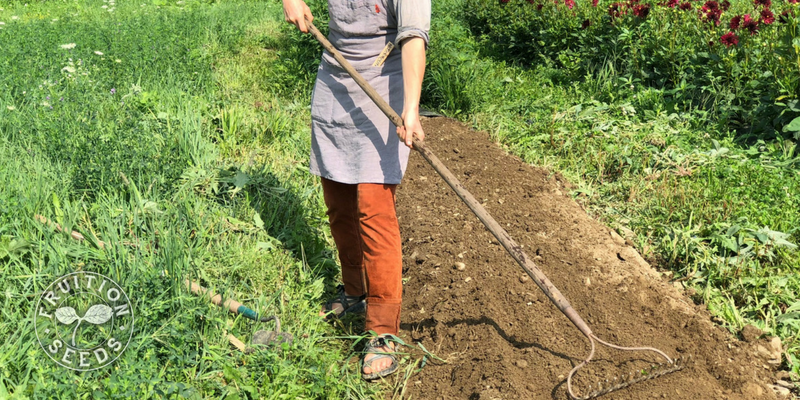
The right tool for every job: The tine-side of a rake picks out rocks while the flat edge levels the soil.
Seeds To Plant: End of July to Mid-August
Here is the full list of seeds to plant the final week of July until the second week of August. They break down nicely into four categories:
1. Compact Peas
Fall compact peas are the best peas, which you know as soon as you take your first bite. As cold turns starch to sugar, fall peas are the sweetest and easily the most tender. And, because the days are getting short and the nights cold, I always seem to appreciate them more.
Compact peas have many mouth-watering snap, snow and shelling varieties.
Full-size peas are, alas, not an option. More than twice the height, their maturity dates are also notably longer. Compact peas will surround you with much more reliable abundance. Not to mention, they’re a breeze to manage by comparison, since the trellising is optional.
Here in Zone 5 on our farm in the Finger Lakes, mid-August is the final call for tucking peas in the ground to actually harvest their luscious pea pods. Their leaves, tendrils and flowers are also delicious, though. You’ll enjoy your peas in many ways for many weeks!
2. Roots
Early August is the final call for full-size, full-flavor roots to mature before frost in the Finger Lakes! This will be our fourth succession of carrots from our first sowing in late April. We’re planting carrots this week as well as beets, kohlrabi and the glorious watermelon radish. It’s a few weeks early for smaller salad radishes, but early August is ideal for sowing watermelon radish, which despises growing in spring. Though it’s not a root, we’re sowing fennel, as well. Fennel and watermelon radish are similar in their love of cooler weather, growing most sweet and tender as the days grow short.
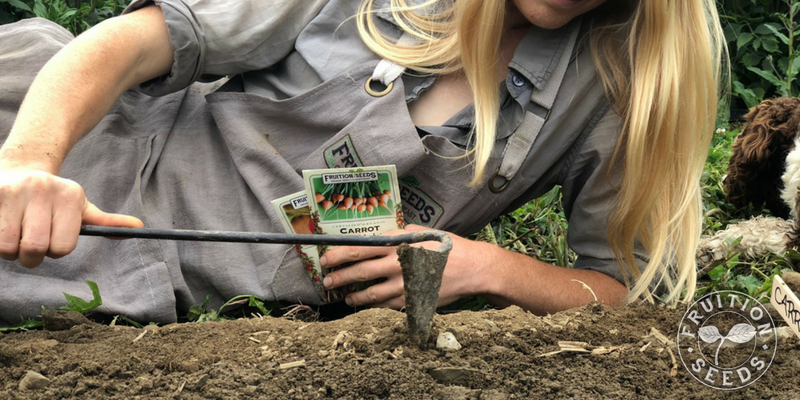
Preparing a loose, fine seedbed is one of the greatest challenges of growing carrots.
Carrots and beets are so rewarding, though they are far from the easiest vegetables to grow. Here are a few tips:
- The straightest, smoothest roots are grown in rich, loose soil.
- Maintain consistent moisture to provide even, abundant and early germination. Here’s how we do it: spread a layer of row cover directly on your freshly sown bed, gently watering them in (watering row cover and all). Be sure to keep your row cover moist, effectively raising the temperature of the soil and provide ample, even water to optimize your germination. Once your seedlings are an inch tall, remove the row cover.
Ample, even water and row cover increase the germination of your carrots.
- Thin your roots as soon as their first true leaves appear.
- Continue to thin as the weeks go by, enjoying tender, baby roots as you make space for your longest, widest roots. Hop on over to our tutorial on carrot thinning.
3. Greens
The world is your oyster, when you love greens as much as I do. Nearly endless options abound. Greens don’t require tons of fertility, so don’t hesitate to plant lettuce where you just harvested lettuce!
Spinach: Though it’s too early to plant true spinach (hold off til mid/late August, if you can…!), it’s always a perfect time to sow Asian (Tatsoi) spinach. Heat tolerant and cold-hardy, we enjoy Asian spinach in all the ways we do true spinach, both raw and cooked.
Turn over a new leaf! Fall greens are the sweetest and swiss chard is no exception.
Kale: Indeed, we’ve been growing kale all season. Why plant more? If your plants have stopped producing, harvest what is left, bring the stalk to the compost and plant a new row with a touch of fresh compost, ready to thrive and surround you with abundance. Also, kale planted now will have a greater chance of living through the winter, becoming the first greens you eat as the snows melt.
Swiss Chard: Like kale, we’ve had swiss chard growing since April. However, some years the leaf miners are absolutely atrocious. If their populations have gotten out of control, I always sow a fall succession in early August so we can finish the season with glorious abundance.
Baby Salad & Mesclun Mixes: Any time between mid-April and mid-September is a perfect time to sow mesclun and lettuce mixes to harvest as baby greens. Now is no exception.
Any time between mid-April and mid-September is a perfect time to sow mesclun and lettuce mixes to harvest as baby greens.
Lettuce: Here are a few options! Butterhead: Optima; Romaine: Plato II, Flashy Troutback; Loose Leaf: New Red Fire, Gentilina, Grosse Blonde Pareseusse
Head Lettuces: early August is a unique time… try sowing both head-loving lettuces (New Red Fire) and cold-loving lettuces (Winter Density). You’ll enjoy eating them both!
Also, how do you decide to grow greens as baby leaf or full heads? You can have your cake and eat it, too! Enjoy this video tutorial with the details.
4. Herbs
Every 2 to 3 weeks we’re succession sowing cilantro and dill. Early August is no exception! We’re also sowing our final succession of Genovese basil because all our earlier plantings are going to seed and we never seem to tuck enough pesto in the freezer. (Last year we made nearly four gallons…!)
Did you know how you harvest your basil makes a huge difference in its quality? Here is a video tutorial with the secret strategy.
Early August is the final call to sow basil that will grow large enough to fill your freezer with pesto.
To enjoy consistent harvests of cilantro and dill all season long, you’ll need to succession sow them every 2 to 3 weeks.
For cilantro that bolts less quickly:
– Only direct sow
– Offer ample, even water, especially just before harvest to inspire quick re-growth and
– Know cilantro will bolt less in the cold. We sow cilantro in fall, harvesting some in fall and again after the snows melt, often for several cuttings. In summer, succession sowing is a necessity.
For dill that bolts less quickly:
– Cultivate dill the same as cilantro, just know it is frost-sensitive.
Enjoy every moment of summer and happy planting, Friends!
Sow Seeds & Sing Songs,

and the Many Beings of Fruition
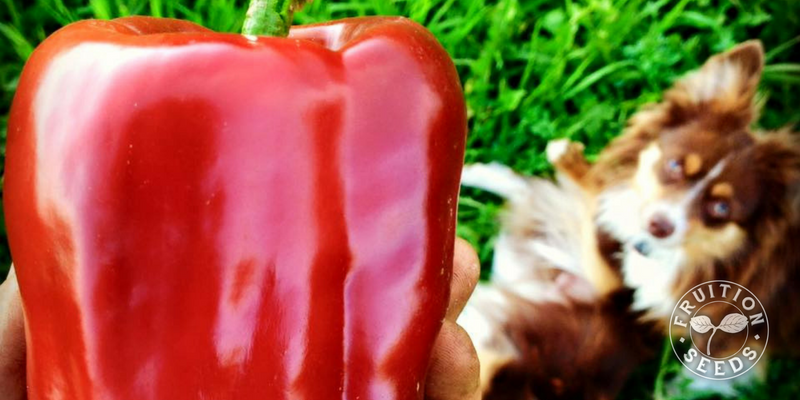
Enjoy the fruits of your labor, Friends! Guest appearance with Pancho and Davi, our two mini-aussie mutts, by the way!

